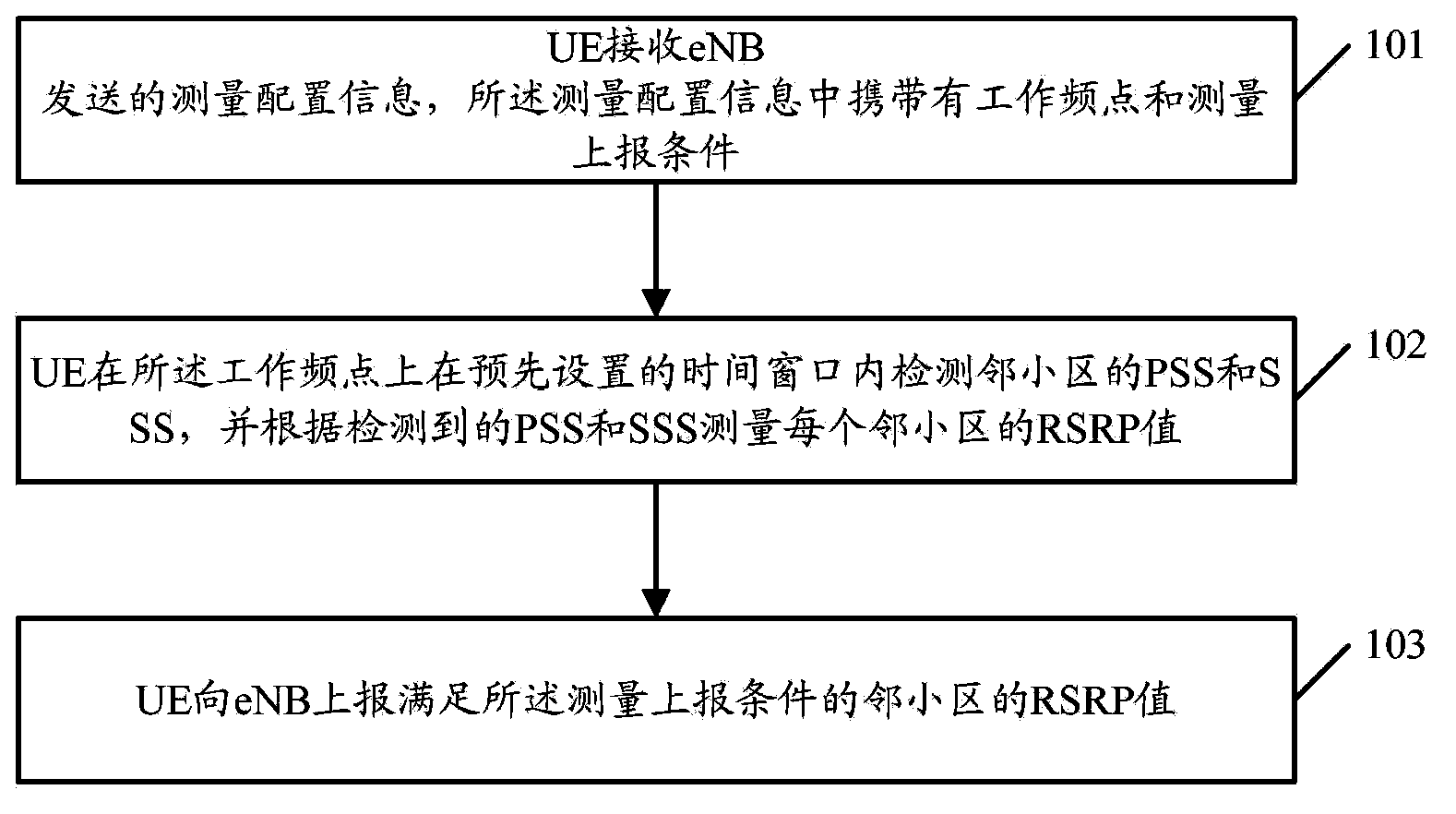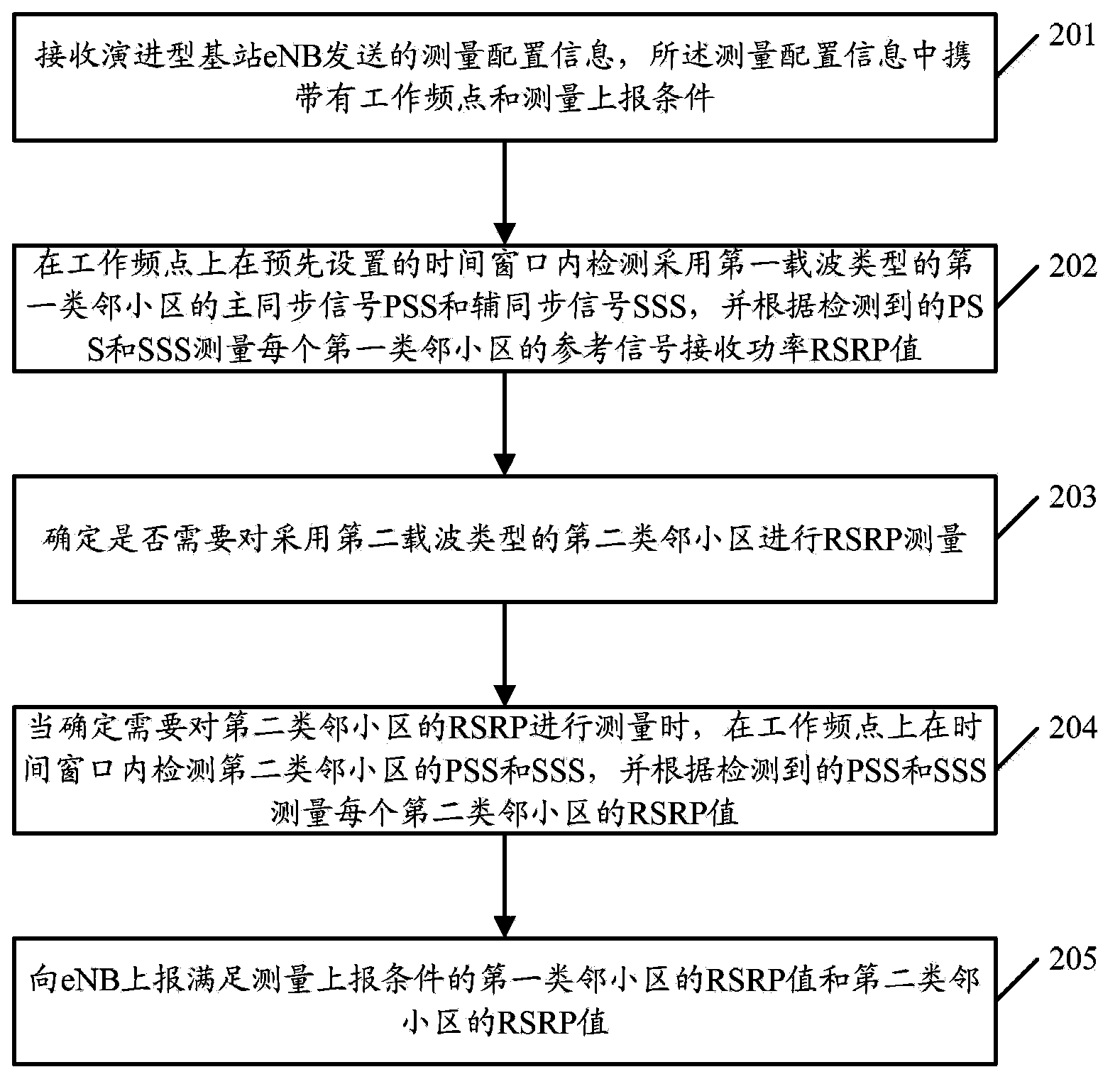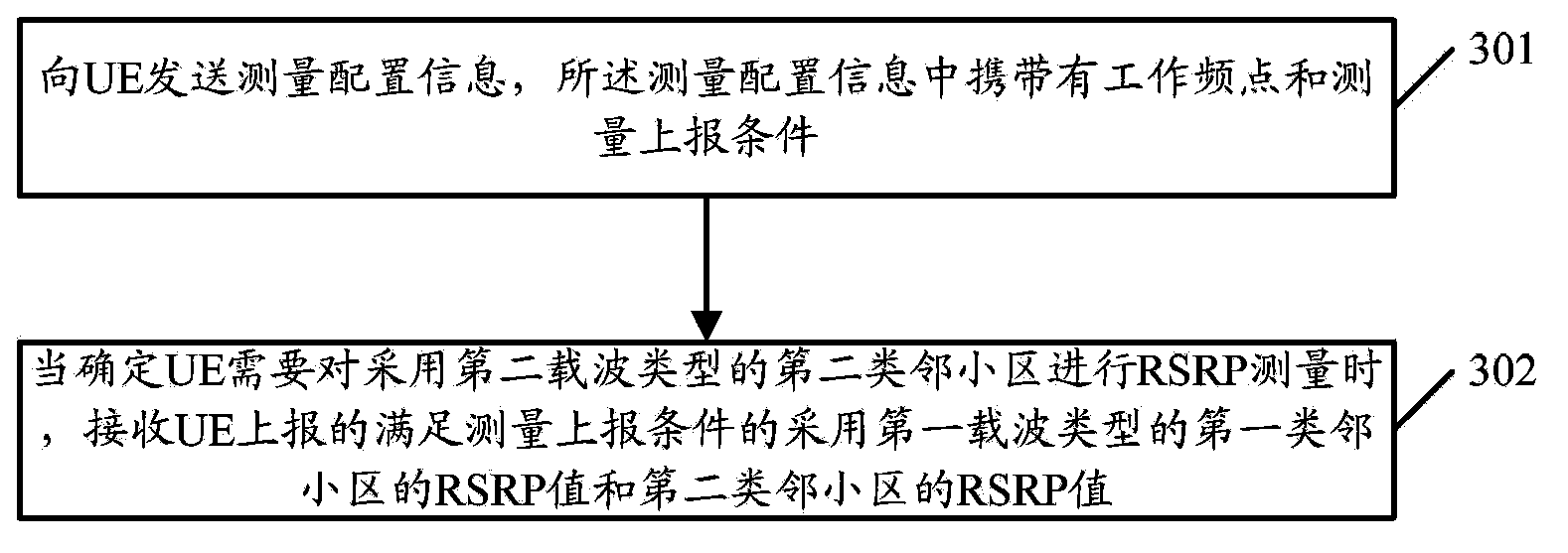Method and device for measuring reference signal received power
A technology for receiving power and reference signals, applied in wireless communication, electrical components, etc., can solve the problems of insufficient information, inability to use new carrier types for neighbor cell measurement, and insufficient handover decision optimization, etc., to achieve the effect of easy popularization
- Summary
- Abstract
- Description
- Claims
- Application Information
AI Technical Summary
Problems solved by technology
Method used
Image
Examples
Embodiment Construction
[0036] Aiming at the problems existing in the prior art, the present invention proposes an improved measurement scheme of reference signal received power, which can implement RSRP measurement for a new carrier.
[0037] In order to make the technical solution of the present invention clearer and clearer, the solution of the present invention will be further described in detail below with reference to the accompanying drawings and examples.
[0038] figure 2 It is a flow chart of the first implementation of the method for measuring the received power of the reference signal in the present invention. like figure 2 shown, including the following steps:
[0039] Step 201: Receive measurement configuration information sent by the eNB, where the measurement configuration information carries operating frequency points and measurement reporting conditions.
[0040] In this step, the UE receives the measurement configuration information sent by the eNB, and the measurement configu...
PUM
 Login to View More
Login to View More Abstract
Description
Claims
Application Information
 Login to View More
Login to View More - R&D
- Intellectual Property
- Life Sciences
- Materials
- Tech Scout
- Unparalleled Data Quality
- Higher Quality Content
- 60% Fewer Hallucinations
Browse by: Latest US Patents, China's latest patents, Technical Efficacy Thesaurus, Application Domain, Technology Topic, Popular Technical Reports.
© 2025 PatSnap. All rights reserved.Legal|Privacy policy|Modern Slavery Act Transparency Statement|Sitemap|About US| Contact US: help@patsnap.com



